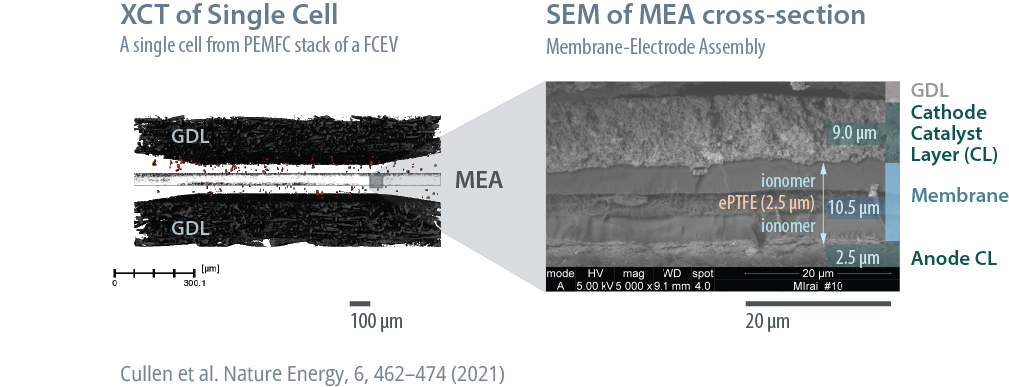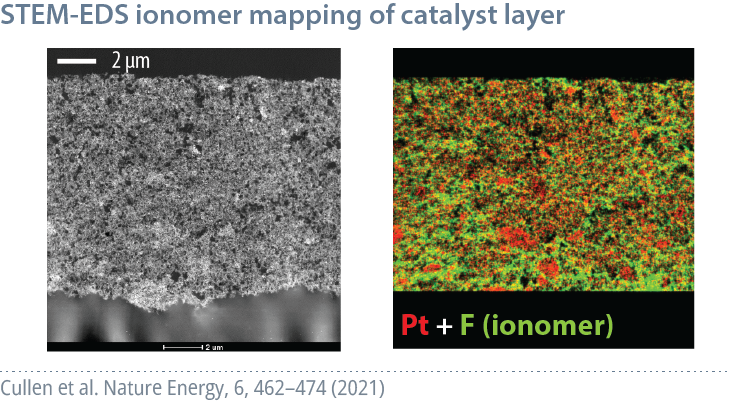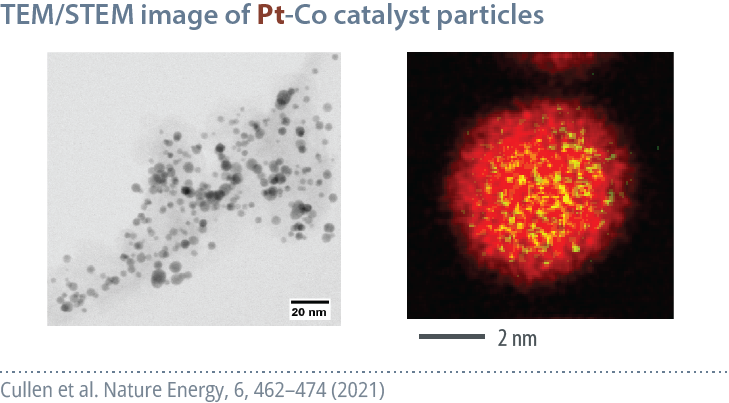The current state-of-the-art (SOA) materials in Fuel Cells
The current state-of-the-art (SOA) materials used in commercial light-duty vehicles (LDVs) can effectively serve as the starting point and benchmark for the next-generation HDV components. The United States Council for Automotive Research (USCAR) provided our consortium with components from the Toyota Mirai FCEV, following 300hr of real-world driving.
The complexity of the fuel-cell materials arising from their heterogeneity, porosity, varying hydrophilicity, organic and inorganic constituencies, and characteristic lengthscales necessitate the employment of a wide range of techniques suited to probe their multi-scale morphology and properties.

The following are the selected results of our analysis of the automotive fuel cell system that could be representative of the state-of-the-art system and components.
X-ray computed tomography of a single cell shows the porous gas-diffusion layers (GDLs) and the membrane electrode assembly (MEA). The MEA consists of a separator membrane and electrodes (anode and cathode). The membrane is based on a PFSA ionomer reinforced with an expanded hydrophobic (ePTFE) layer in the center for improved mechanical stability.
The PFSA-based ionomer membrane has a dual function: it acts as a separator to inhibit the crossover of reactant gases (H2 and O2) between electrodes, and also as an ion-conducting polymer to facilitate the transport of protons from anode to cathode.

A non-homogeneous ionomer distribution within the cathode, with larger ionomer aggregates near the membrane (shown in green) and regions of dense agglomerates (shown in red) that exhibit limited ionomer infiltration.

The electrodes are comprised of Pt (anode) and Pt-Co alloy (cathode) nanoparticle catalysts supported on high surface area carbon, with a total Pt loading of ca. 0.4 mgPt/cm2
The mean particle size of the Pt0.92Co0.08 cathode catalyst was 4.7 nm with the low Co loading reinforcing the emphasis on durability over BOL performance.
STEM-EDS map of individual Pt-Co nanoparticle image shows the Co alloy core covered with Pt-rich shell (in red)

Fuel cells for Heavy-Duty Vehicles
These observations from commercial LDVs demonstrate significant progress has been made for automotive fuel cells, which will enable us to address the research and development needs unique to HDVs, and achieve the enhanced durability and efficiency targets for heavy-duty applications.